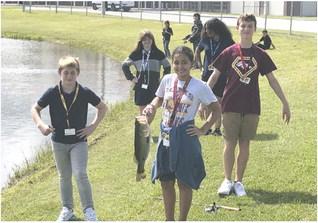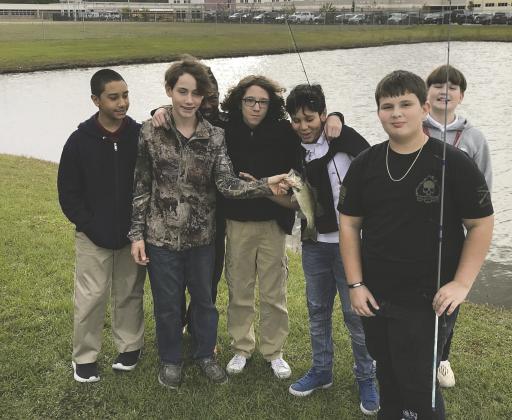In his 15 years of teaching, John Prow has always tried to connect what he enjoys doing in his free time to what he teaches in his job. So about 10 years ago, Prow began writing lesson plans to connect fishing and science. “I love sports and I love the outdoors and fishing, and all along I was writing these ideas and trying to bring them into the classroom,” the St. Cloud Middle School science teacher said.
Those lesson plans are now a fullblown STEM class, approved by the Department of Education and offered at St. Cloud Middle School.
“It’s not a club. It’s not an afterschool of before-school program. It’s not a team. It’s an actual elective class that you take at school during the day,” Prow said.
This is the second year the class has been offered, and there are currently more than 50 students in three separate classes. The class has two parts, each lasting a semester, and students in 6th, 7th, or 8th grade can take it. It is part of the Osceola School District Choice program, so students who are interested in fishing can attend SCMS to be a part of the program.
The students learn about life science, the food chain, food web, energy pyramid, and pond predator/ prey, and they examine pond water under microscope. The class also focuses on experimental design by performing different experiments, such as testing the density and elasticity of different fishing lines. Math is incorporated into the class with weigh-ins with scales, and students also learn how to weigh fish using measuring tape.
And yes, they fish. “At least once a week, we go out the back door and fish [in a pond on campus],” Prow said. “You would not believe how much equipment we have that helps make exploration in this program unique and special. We were part of a grant that supplied us with an enormous amount of bait-casting rods, spinning rods, reels, lures, tackle, microscopes, aquariums, digital scales, and more.”
Through another grant program, Fish Florida has provided every student who has been through the class with their own rod and reel, with line and lures.
“So not only are they learning how, but they have the equipment at home so they can go home and do it themselves,” Prow said.
According to Prow, the idea behind starting the class was to find another thing to get kids excited about school and science, and to show them the connections.
“Some of the best stuff that I see is, like when we’re learning how to tie a new knot, and I show them the knot, show them how to do it and then cut them loose to practice it and learn it. The amount of engagement that you see in those kinds of activities, when they’re learning how to pitch cast or tie these different knots … it’s really fun to see how locked in they get. I’m supporting this interest they have that they might not get anywhere else,” he said.
Prow said that the same kind approach could apply to other hobbies and things that kids like, such as music and video games.
“I think there’s going to be a lot more of it in schools, where you’re trying to connect things that kids really love to do to a specific topic, whether it’s math or reading or whatever class,” he said. “I think it’s going to be something that you see a lot more of in the future.”





